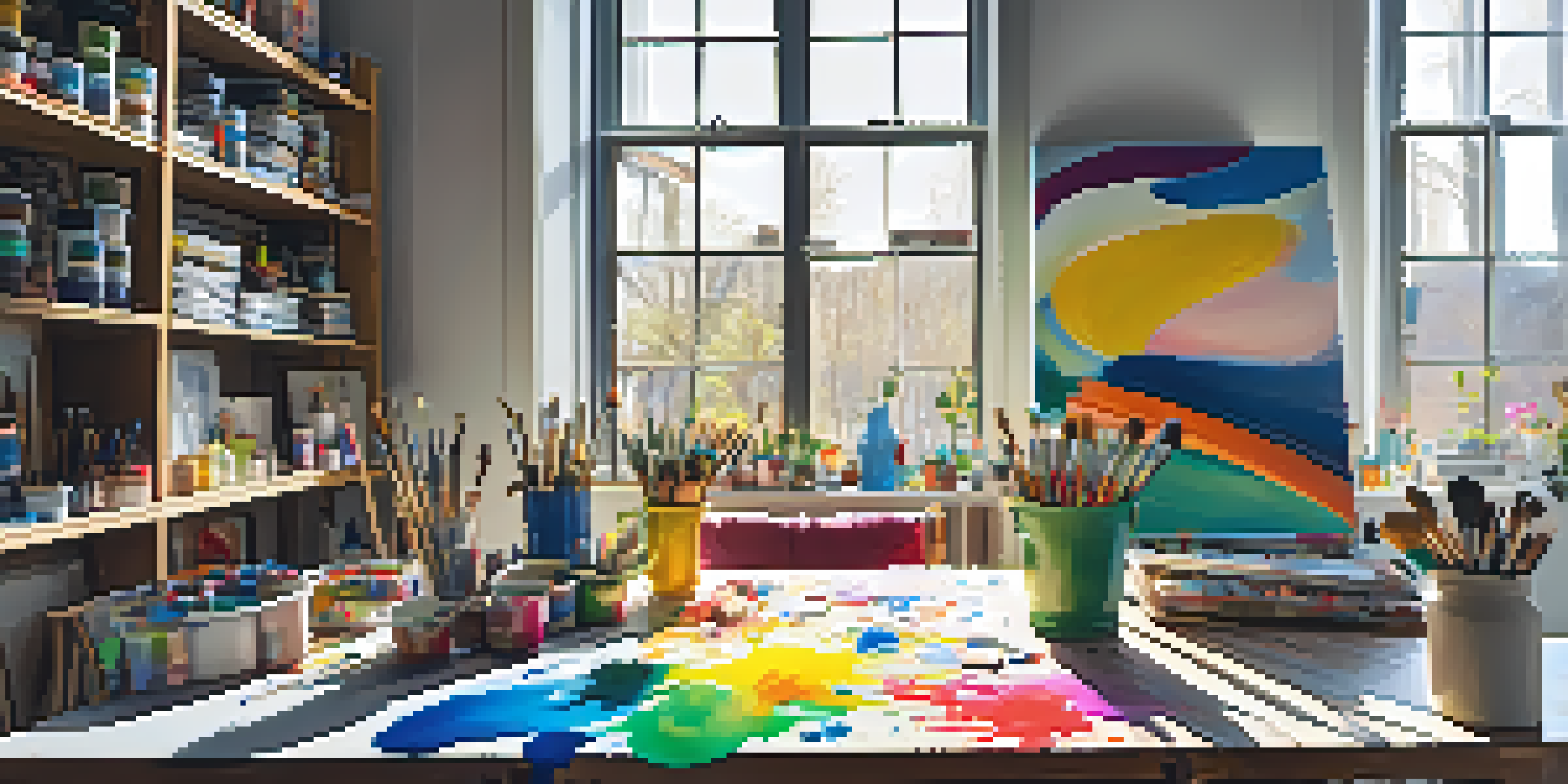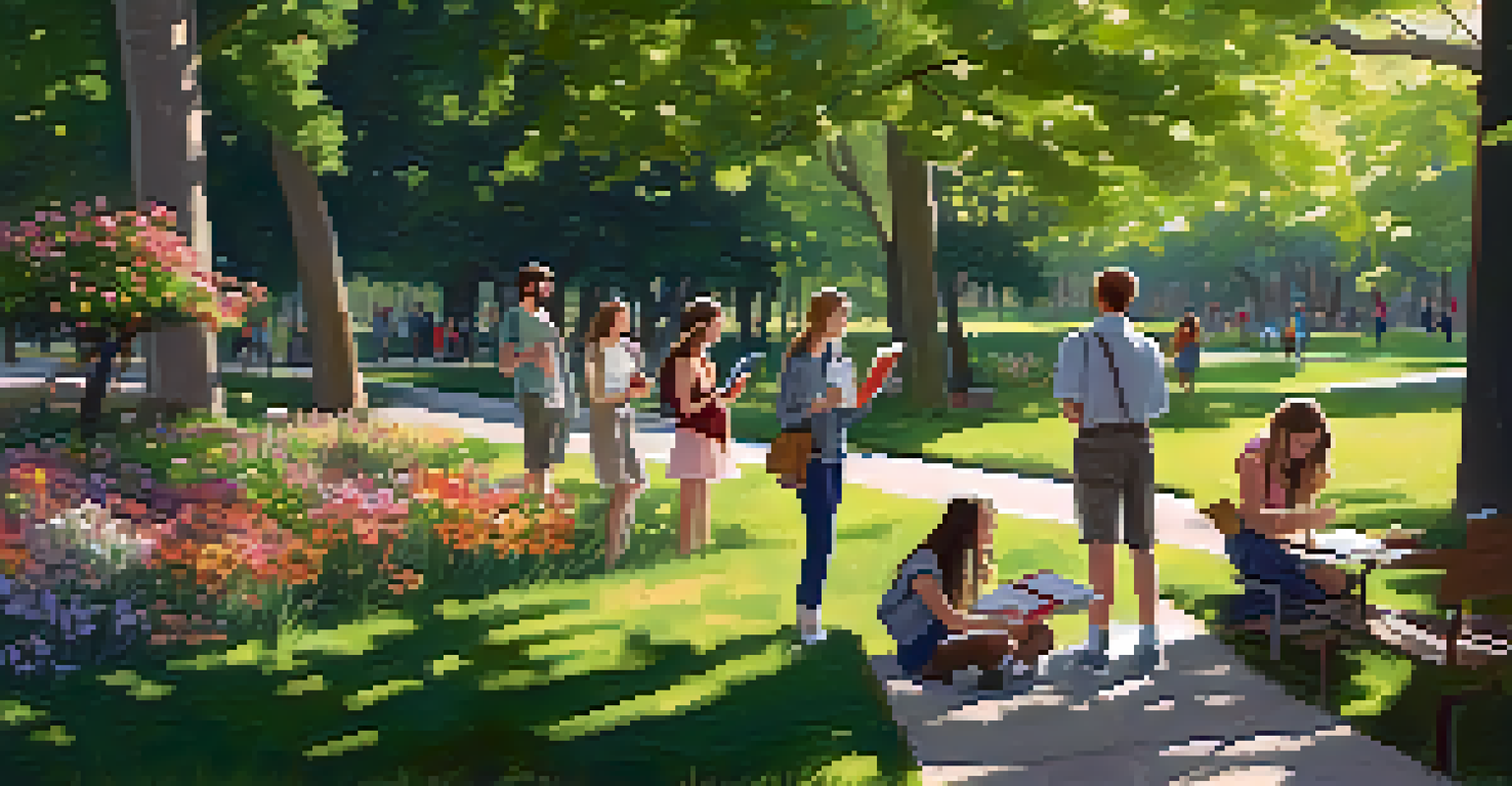Artistic Play: Techniques to Integrate Fun into Creation

Embracing Playfulness in Artistic Expression
Art is inherently a playful endeavor, and embracing this aspect can unlock your creativity. By allowing yourself to play, you’ll find new perspectives and ideas that might not have surfaced otherwise. Think of it like a child exploring a playground—there’s freedom in experimentation, which can lead to unexpected and delightful results.
Every artist was first an amateur.
When you approach your art with a playful mindset, you can break free from the constraints of perfectionism. This means letting go of the fear of making mistakes and instead viewing them as opportunities for growth. Each ‘oops’ moment can be transformed into a unique feature of your work, adding character and depth.
Incorporating playfulness into your creative routine can also rejuvenate your passion for art. Whether it’s doodling randomly before starting a project or trying out new materials just for fun, these small acts can reignite your enthusiasm and remind you why you fell in love with creating in the first place.
Techniques to Foster a Fun Creative Environment
Creating a fun environment is essential for artistic play. Consider surrounding yourself with vibrant colors, inspiring artwork, and even playful music that energizes your space. A stimulating atmosphere can help you feel more relaxed and open to new ideas, making it easier to engage in creative play.

You can also invite friends or fellow artists to join in on the fun. Collaborative projects can introduce new elements and ideas that you might not have considered on your own. Plus, sharing the creative process can lead to laughter and unexpected moments of joy, making the experience even more enriching.
Embrace Playfulness in Art
Allowing yourself to play in your artistic process can unlock new perspectives and boost creativity.
Don’t forget to incorporate breaks into your creative sessions. Stepping away to enjoy a quick game or a walk outside can refresh your mind and stimulate new thoughts. This balance between work and play can enhance your overall creativity and keep your artistic juices flowing.
Experimenting with Different Mediums and Techniques
One of the most exciting ways to integrate fun into your art is by experimenting with different mediums. If you typically paint, why not try sculpting or digital art? Each medium has its unique quirks, and exploring them can lead to surprising discoveries about your own style and preferences.
Art is not freedom from discipline, but disciplined freedom.
You could also mix up your techniques—try painting with your fingers instead of a brush, or using unconventional tools like sponges or even kitchen utensils. This kind of experimentation can feel like a playful science project, where the outcome is uncertain but full of potential. It’s all about the process, not just the end result.
By stepping outside your comfort zone and trying something new, you’ll not only learn more about your capabilities but also infuse your work with fresh energy. The joy found in this exploration often translates into more expressive and vibrant art.
Incorporating Games into Your Creative Process
Games can be a fantastic way to add a layer of fun to your artistic practice. Consider prompts and challenges that push you to create under specific constraints, like a timed drawing session or a color palette challenge. These playful limitations can spark innovation and keep your creative muscles flexed.
Another idea is to create art-themed games with friends, such as an art scavenger hunt where you find objects to inspire your next project. This not only makes the process enjoyable but also fosters community and collaboration, which are vital in the creative journey.
Experiment with New Techniques
Trying different mediums and unconventional methods can lead to surprising discoveries and infuse fresh energy into your work.
Additionally, try incorporating random elements into your work like using a dice to decide colors or subjects. This randomization can lead to surprising results and remind you that art doesn’t always have to be serious; it can be a delightful adventure.
Finding Inspiration in Everyday Life
Inspiration can be found in the simplest of moments. By adopting a playful lens, you can see the world around you as a canvas filled with potential. Whether it’s the way sunlight dances on a leaf or the patterns created by raindrops on a window, these small details can ignite your imagination.
Take walks, visit parks, or simply spend time in your neighborhood with a sketchbook in hand. Observing your surroundings with a sense of wonder can lead to new ideas and perspectives. The more you engage with life, the more material you’ll have to draw from in your artistic endeavors.
Remember, every experience can offer inspiration if you’re open to it. Embracing the playful aspects of life allows you to tap into a wellspring of creativity that can make your art feel more alive and connected to the world.
The Role of Humor in Art Making
Humor is a powerful tool in the creative process. It can lighten the mood, alleviate stress, and encourage a more relaxed approach to art. When you find the humor in your creative journey, it allows you to enjoy the process rather than solely focusing on the final product.
Consider creating pieces that reflect your sense of humor—whether they’re whimsical illustrations, funny sculptures, or playful installations. This not only infuses your work with personality but also resonates with viewers who appreciate the lightheartedness.
Incorporate Humor and Joy
Finding humor in your creative journey not only alleviates stress but also makes the artistic process more enjoyable and relatable.
Incorporating humor can also be a way to critique or comment on serious subjects in a more approachable manner. This playful juxtaposition can provoke thought while keeping the experience enjoyable for both the artist and the audience.
Reflecting on Your Artistic Journey with Joy
As you integrate fun into your artistic practice, it’s important to take time to reflect on your journey. Consider keeping a journal where you document not just your creations but also the joy and playfulness you experienced along the way. This can serve as a reminder of the reasons you started creating in the first place.
Reflecting on your experiences helps you recognize growth and development as an artist. It’s easy to get caught up in the hustle of creating, but pausing to celebrate your achievements can be incredibly rewarding. Remember to appreciate the small wins and the joy they bring.

Ultimately, your artistic journey should be one filled with laughter, exploration, and joy. By fostering a playful spirit in your creative endeavors, you’ll not only enhance your skills but also cultivate a deeper love for the art you create.